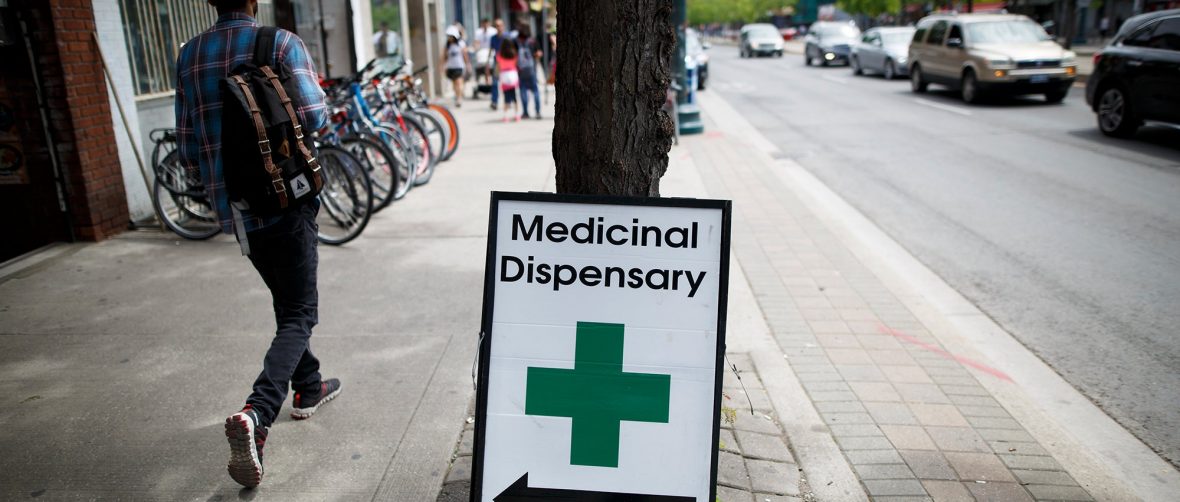The cannabis industry is growing, and naturally, investors are taking notice.
With 30 states and the District of Columbia having legalized the use of the drug for medicinal or recreational use, the stock prices of the companies that grow, process and sell marijuana have been rising.
Late last year, the first marijuana-focused exchange-traded fund, or E.T.F., listed in the United States began trading, making it easier for investors to buy into a swath of companies connected to the industry.
The fund, the ETFMG Alternative Harvest E.T.F., has attracted about $400 million since December, making it one of the fastest growing E.T.F.s this year. The fund tracks 39 companies, many of which trade on stock exchanges in Canada, where listing requirements are less rigorous, and where that country’s Senate passed legislation to legalize marijuana throughout the country.
While investors are optimistic that companies linked to the marijuana industry will continue to grow, the performance of the Alternative Harvest E.T.F. has been uneven. The E.T.F. hit a high of $39.72 in January, but it has slipped about 25 percent since then. The value of the Standard & Poor’s 500-stock index has barely changed over that same period.
The fund’s performance underlines the risk of investing in narrowly defined and potentially volatile thematic funds, which may have higher than average costs. (The Alternative Harvest E.T.F., for instance, has an annual fee of 0.75 percent, compared with 0.04 percent for the iShares Core S.&P. 500 E.T.F.)
The Alternative Harvest fund is just one of dozens of new thematic E.T.F.s intended to make it easier to buy into emerging corners of the economy. E.T.F.s have been created to track companies selling cybersecurity services, trying to address rising obesity rates and sponsoring sports teams and leagues. In June, a fund, Rogers AI Global Macro E.T.F., was introduced that uses artificial intelligence in its economic modeling.
But many thematic E.T.F.s invest in stocks that are included in broad-based stock indexes like the S.&.P. 500.
“There are a lot more niche products, but most of the assets are in plain vanilla stock indexes,” said Alex Bryan, who follows E.T.F.s for Morningstar. “You are making an active bet when you invest in a fund that tracks a subset of that index. Sometimes those bets will pay off, sometimes they won’t. If you’re going to do it, make sure you know what you’re doing.”
In a broad sense, the prospects for the marijuana industry appear to be strong. Growth rates in states like Colorado, which has some of the most permissive laws on marijuana use, have started to slow. But the market nationwide is expected to continue expanding as more states decriminalize marijuana use.
Matt Karnes, the founder of GreenWave Advisors, a financial research firm focused on the industry, estimates that legal retail cannabis sales will grow about 35 percent a year, to $35 billion, by 2022, assuming every state legalizes some form of marijuana use.
In Canada, at least three E.T.F.s focused on marijuana — Horizons Marijuana Life Sciences Index, the Marijuana Opportunities Fund and Evolve Marijuana E.T.F. — have been introduced, with mixed success.
About 70 percent of the companies tracked by the Alternative Harvest fund either focus on the production and sale of medicinal cannabis or are pharmaceutical companies that make cannabis-based products. Some of those companies, like Canopy Growth and Aurora Cannabis, are growers, while others have licenses to run dispensaries in the United States.
Other companies included in the E.T.F. have tangential links to marijuana, like the Altria Group and British American Tobacco, or Scotts Miracle-Gro, the lawn and garden company.
The bulk of the companies, though, are small Canadian ventures, which means that investors who buy into the fund are essentially betting on young, riskier companies, only some of which will survive as the market develops.
“You should think about this fund the same way you might think about, say, Chinese internet stocks,” said Dave Nadig, the managing director of ETF.com, a news and analysis website. “This might be speculative, but it could pay off.”
Samuel Masucci, chief executive of the E.T.F. Managers Group, which created the Alternative Harvest fund, said the companies in the fund are poised to grow as the laws regulating the marijuana industry are clarified. Investors, he said, have bought into that concept. E.T.F.s, he said, need about $50 million in assets to break even, a figure the Alternative Harvest raised soon after it was introduced.
“The train left the station on this,” Mr. Masucci said. “I expect the fund to get larger, but a lot will depend on companies coming into the market globally, U.S. regulatory issues and people having a handle on what is going to happen.”
The Alternative Harvest fund began as an E.T.F. focused on real estate in Latin America. Political uncertainty in the region limited the growth of the fund, so Mr. Masucci reconfigured its mission. To do that, he had to notify investors, who had a chance to get their money back. The bulk of them decided to take shares in the Alternative Harvest fund.
Their endorsement may have been another sign that the cannabis industry is going mainstream. A Pew Research Center survey conducted in October showed that 61 percent of Americans said marijuana should be legalized, compared to 31 percent in 2000. An October Gallup poll revealed similar results, with 64 percent saying they supported legalization.
In April, the former speaker of the House, John Boehner, an Ohio Republican, became an adviser to Acreage Holdings, a company that grows and dispenses marijuana in the United States. When he was in Congress, Mr. Boehner said he was “unalterably opposed” to legalizing marijuana

